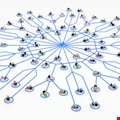Infosecurity Opinions

Comment: The EU, Cloud Computing and Security
HP’s Prescott Winter gives his perspective regarding developments in cloud computing and security within the European Union

Comment: Yes to Privacy, and Yes to Internet Surveillance
By comparing protective measures in the real world with cyberspace protection, Tim Watson of De Montfort University discusses privacy versus security and the new internet surveillance powers proposed by the UK government. Watson argues that both privacy and security could be enhanced by increasing internet surveillance

Comment: Rebalancing the Security Portfolio
Are security budgets addicted to anti-virus at the expense of more immediate and emerging threats? Imperva’s Rob Rachwald explains why its time to shift the focus

Comment: Botnets – The Dark Side of Cloud Computing
Botnets pose a serious threat to your network, your business, your partners and your customers. Botnets rival the power of today’s most powerful cloud computing platforms, but these “dark” clouds are controlled by cybercriminals. Angelo Comazzetto at Sophos discusses the risks of botnet infection, and how businesses can protect themselves

Comment: What the Presidential Candidates Aren’t Talking About
According to the FBI and Director of National Intelligence, cyber threats will soon be our largest worry. Given this, Peter George of Fidelis Security Systems wonders why the major presidential candidates aren’t talking about cybersecurity. The lack of discussion on this issue, he says, would seem disproportionate given its potential severity

Comment: Mobile Security Shapes Up
What are the options for data security managers as the network periphery expands? Steven Sprague of Wave Systems explores the possibilities

Comment: Getting the Right Balance – Proactive and Reactive IT Security
The open nature of the web has led to a rapidly changing threat landscape. John Stock with Outpost24 discusses how to address the balance of proactive and reactive security to protect against vulnerabilities in today’s environment

Comment: Businesses Need to Wake Up to Open Wireless Access Risks
Cryptzone’s Peter Davin explains how a Massachusetts federal copyright lawsuit will – hopefully - wake companies to the serious risks they run by ignoring wireless security issues

Comment: Perfect Partners – Secure, Social, and the Cloud
HighQ’s Stuart Barr looks at two of the hottest topics in technology today – social software and cloud computing. He examines the inherent risks of cloud-based social software and gives practical advice as to how security-conscience enterprises can still take advantage of these innovations

Comment: The Future of Network Security
A quiet revolution – where the concept of identity becomes as much a part of the network fabric as the humble IP address itself – is gathering momentum. Using a simple "Magic Key" analogy, BlackRidge Technology’s James Rendell provides a glimpse of the future and explains the implications of transforming from address-based to identity-based network security

Comment: Organizations Must Keep Up with New Compliance Regulations
Guy Churchward of LogLogic addresses the compliance challenges for 2012 and how enterprises need to respond

Comment: Managing Authentication in Heterogeneous Environments
SafeNet’s Gary Clark outlines the layered approach necessary for secure digital identities in cloudy, mobile ecosystems

Comment: Information Assurance Professionals – You Are Competent, but Are You Certified?
A new certification scheme has been developed for information assurance professionals to help the UK Government meet its cybersecurity objectives. The APM Group’s Richard Pharro looks at why the scheme has been developed, what benefits it will bring to the industry, and how people working in IA are assessed

Comment: Proposed EU Data Protection Revisions Good for Businesses, and Individuals
Sarb Sembhi of consultancy Incoming Thought sees the proposed revisions to the EU Data Protection Directive as a win-win situation

Comment: Building a Fence around Data and the EU
The proposed revisions to the EU Data Protection Directive will mean that global organizations must have a strong "on the ground" presence in Europe. That's according to the University of Milan's Marco Cremonini

Comment: Intelligent IT Choices Will Prevent Disaster
The recent European Disaster Recovery survey 2011, conducted by EMC², highlights the prevalence of companies that lack a robust disaster recovery strategy, with 54% of those surveyed suffering data loss and system downtime within the last year. If businesses are to minimize the detrimental impact of an IT system failure, intelligent IT choices need to be made, argues Richard Barker of Sovereign Business Integration

Comment: Passwords Are Now Past Their Best
Phil Robinson of Digital Assurance shares his views about the growing dependence upon passwords and looks at management methods and technical alternatives to improve upon them

Comment: Don’t Compromise on Visibility, Speed or Security
Stream-based deep packet inspection (DPI) is faster and easier to deploy, manage and update when compared with proxy-based DPI. That’s according to SonicWALL’s Andrew Walker-Brown

Comment: Realizing Business Value from Access Risk Management
Courion’s Dave Fowler argues that the industry needs to rethink its approach to access risk management and embrace the development of next-generation identity and access management solutions that are easy to deploy, offer quick return on investment and enable organizations to better understand and manage access risk

Comment: A Security Culture Requires Leadership from the Top Down
To grow an effective ‘security culture’ in your organization, infosec managers must get their management to set the proper example, says consultant Gregor Campbell



